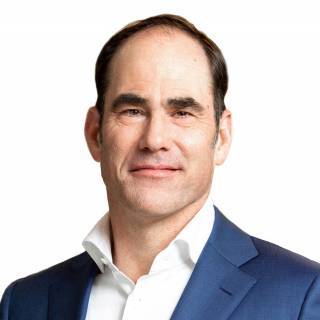Central banks in 2025: They’re singing a different tune
Central bankers are adjusting their calculations yet again as we approach 2025. So, from New York to Tokyo, London to Frankfurt, we’re also reassessing what we think they’ll be up to next
Federal Reserve: Not so far, not so fast
You may be forgiven for questioning why the Fed has already cut the policy rate 75bp despite the economy growing at a rate close to 3%, an inflation rate above target, where unemployment remains very low, and equity markets and house prices are at all-time highs. The rationale goes that the 2022/23 rate hiking cycle was the most rapid and aggressive for 40 years, and the period between the last rate hike and the first rate cut has been unusually long at 14 months – the average has been around six months over the past 50 years. Monetary policy operates with long and varied lags and the Fed wants a soft landing. The fact that it has a dual mandate of 2% inflation AND maximum employment means they have to set monetary policy to optimise for both. Inflation is looking better behaved, and this is allowing it to put more emphasis on the cooling jobs data.
With this in mind, the Fed is moving policy from restrictive territory to one that's slightly looser. They suggest that the long-run expectation for the Fed funds is around 3%, and with the ceiling rate currently at 4.75%, they have room to play with. As such, we favour them cutting rates again in December, but a pause in January looks likely. By the March FOMC meeting, the Fed will have a clearer understanding of President Trump's tariff, tax and spending plans. The prospect of domestic tax cuts supporting growth while tariffs push up inflation certainly argues for a slower and more gradual rate-cutting path next year. We look for 25bp of cuts per quarter in 2025 with a terminal rate of around 3.75% in the third.
European Central Bank: Going below neutral
Having been slow to address rising inflation and arguably late in stopping rate hikes last year, the ECB now appears determined to get ahead of the curve and return interest rates to neutral as quickly as possible. For the doves, this is a no-brainer, and for the hawks, the argument seems to be that getting rates back to neutral quickly could be enough to avoid another episode of unconventional monetary policy with quantitative easing and negative interest rates further down the line.
However, with more downside risks for the eurozone economy emerging and even if inflationary pressures do not disappear entirely, we expect the ECB to go below neutral. This would follow the ECB’s line of argumentation since September this year, i.e., putting more emphasis on tackling the lack of growth than squeezing out the last inflation bits. As a result, we see the deposit rate at 1.75% before the summer.
Bank of Japan: Pursuing policy normalisation
The BoJ marked a significant shift in its monetary policy in 2024. It ended its negative interest rate policy in March and raised its target rate to 0.25% in July, causing considerable volatility, especially in the FX market. Even before entering 2025, the BoJ is leaving open the possibility of another rate hike as early as December.
Next year, as it has been this year, the BoJ’s rate decision will be a surprise to the markets and will be a live decision each time around. We continue to believe that the BoJ can raise its target rate to 1.0% by the end of 2025. We expect wage-driven inflationary pressures to grow and corporate profits to improve, while the weak JPY is a risk factor for inflation overshooting. The BoJ will be wary of external risks and global financial market jitters, so the pace of normalisation will slow towards the end of the year.
Bank of England: Gradual for now, faster cuts in the spring
In sharp contrast to the ECB, the Bank of England is taking rate cuts very gradually. The recent budget and all the extra government spending that came with it will boost growth in 2025. Meanwhile, services inflation, the guiding light for UK policy right now, is proving unhelpfully sticky. It’s set to stay around 5% for the next few months, although the story looks a bit better when volatile items are stripped out.
A December rate cut looks unlikely now, but renewed progress on services inflation and wage growth in the spring should, we think, unlock faster cuts. We expect the next rate cut in February and think we’ll most likely see another in March and then at every meeting until rates get down to the 3.25% area.
People's Bank of China: Easing with its expanded toolkit
This has been a busy year for the PBoC, with a new policy framework reform announced in June, 30 bp of 7-day reverse repo rate cuts, a 100bp of RRR cuts, and new programmes introduced to support the equity and property markets. The PBoC’s stabilisation efforts were generally well-received by market participants.
In 2025, the PBoC will build on the foundations laid this year. We expect 20-30bp of rate cuts, with more if US tariffs come in earlier or higher than currently anticipated. Another 50bp RRR cut is widely expected in the coming months, and we can see a cumulative 100bp of RRR reductions before the end of 2025. We also anticipate further expansion of open market operations and a gradual wind-down of the medium-term lending facility in the next part of the PBOC’s reform, as well as continued targeted programmes to support vulnerable areas of the economy.
This publication has been prepared by ING solely for information purposes irrespective of a particular user's means, financial situation or investment objectives. The information does not constitute investment recommendation, and nor is it investment, legal or tax advice or an offer or solicitation to purchase or sell any financial instrument. Read more
Download
Download article
5 December 2024
Economics, Actually’, our 2025 hit list - All the articles This bundle contains 17 Articles



